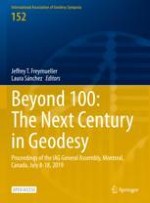This open access book contains 30 peer-reviewed papers based on presentations at the 27th General Assembly of the International Union of Geodesy and Geophysics (IUGG). The meeting was held from July 8 to 18, 2019 in Montreal, Canada, with the theme being the celebration of the centennial of the establishment of the IUGG. The centennial was also a good opportunity to look forward to the next century, as reflected in the title of this volume. The papers in this volume represent a cross-section of present activity in geodesy, and highlight the future directions in the field as we begin the second century of the IUGG. During the meeting, the International Association of Geodesy (IAG) organized one Union Symposium, 6 IAG Symposia, 7 Joint Symposia with other associations, and 20 business meetings. In addition, IAG co-sponsored 8 Union Symposia and 15 Joint Symposia. In total, 3952 participants registered, 437 of them with IAG priority. In total, there were 234 symposia and 18 Workshops with 4580 presentations, of which 469 were in IAG-associated symposia.
